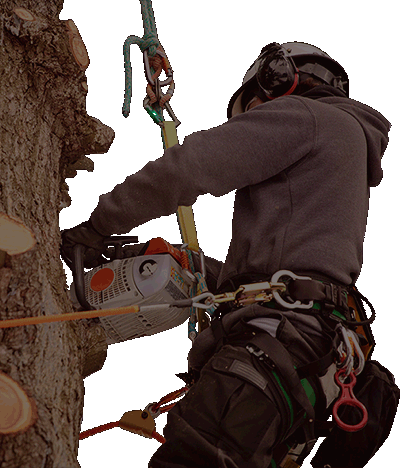
As the summer heat hits, we take special care to maintain our trees. This way, they’ll hold on to their full canopy and radiant, seasonal glow all summer.
Unfortunately, there’s one summer pest that gives our Spartanburg trees just as much attention, but doesn’t treat them as kindly.
- Details

Throughout summer, we’re rewarded with our fair share of clear, blue skies with gleaming sunshine. We also experience the complete opposite - dark, rainy skies coupled with robust, howling wind.
While you may prefer one scene over the other, there’s no question our Spartanburg trees would rather soak up the sun than get drenched in the downpour.
- Details

What are some things that remind you of summer?
Maybe it’s sinking your feet into the warm sand of your favorite beach or the savory smell of a good ol’ family barbeque.
- Details

Did you know that bees pollinate 85 percent of the planet's flowering plants and 35 percent of the crops we eat? Without bees, our grocery stores would look shockingly sparse.
- Details

After caring for Spartanburg trees for over 125 years, we know spring is often when your Spartanburg trees get the most attention.
Just as spring blooms, we seem to appreciate the fresh air and new greenery more than ever.
- Details

We love the look of our mature Spartanburg trees after a timely prune. They’re crisp, clean cut and ready to grow a healthy canopy.
- Details

If you were strolling through your yard and noticed something looked off on your tree, chances are there’s a problem.
First off, kudos to you for noticing! The earlier you spot problems on your tree, the sooner you can take action.
- Details

One of the best parts of summer? Relaxing beneath trees’ cool, shady canopy.
But if your Spartanburg tree has no leaves on one side, your favorite summer spot looks far less appealing.
- Details

Just like us, Spartanburg trees need more than a once-and-done checkup with the doctor.
The best way to keep you – and your trees! – healthier is through small actions throughout the year.
- Details

We’re weeks into the growing season, and our Spartanburg trees are happy to show off their fresh appearance: a full, blooming canopy, sprouting flowers and fruits and—wait, are those curling leaves?
- Details






